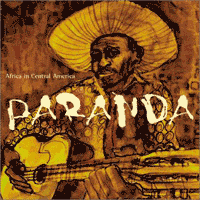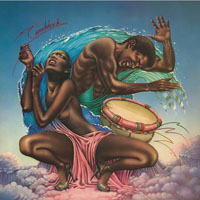
TUMBLACK (Be With Records 167LP)
Another reissue, this time of a 1979 rarity that has been bootlegged several times over the years. The recording is from Guadeloupe and Martinique, part of the chain of tiny islands scattered between Puerto Rico and Trinidad, off the north coast of Venezuela. The echoing call to an equally echoey drum at first reminds you of "Day-O," the well-known "Banana boat song," but this clearly is from a deeper source and far from kitschy. Also it's in French as far as it is comprehensible (what sounds like "Gibiley-o" is Jubilee). The drums dominate but it is not a percussion album per se, because bass and synth soon enter thanks to Wally Badarou (who later worked with Herbie Hancock, Grace Jones and Black Uhuru) on mini Moog & Yves Hayat on knobs. It falls into the Zouk and Gwo-ka category on tracks like "Parlement," though the purely percussive tracks qualify in my mind as African. A little burst of "syndrums on flanger" (on "Caraiba intro") betrays the 70s origins; otherwise it's a clearcut case of superb percussion ("Gwo ka" is Antillean creole for "Big drum"). This was originally conceived as a concept album: traditional on side one and remixes with funk and disco overtones on side two. The disco doesn't age so well, especially primitive synth effects like "steel drums," but the horns sound live. The album returns to base with "Bateau la passé" authentic street sounds that are pure drum and chant.
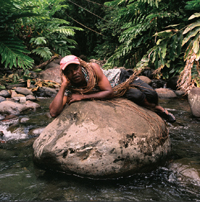
POLOBI & THE GWO-KA MASTERS
ABRI CYCLONIQUE (RealWorld RW246)
First I have to say this is not really a gwo-ka album, but if you approach it with an open mind, it is a dub album, with elements of African Head Charge (i.e. early Adrian Sherwood mixology) and also Herbie Hancock- or Joe Zawinul-era jazz with loads of spacey keyboards, muted trumpet, and even more echo on the vocals. Here is a good piece, with audio samples, on Gwo-ka from Bandcamp. One of my musically savvy friends (from the Caribbean) said he thought this was a DJ album using some touches of gwo-ka as an element, but that the result falls flat. The songs are in a hoarse Guadeloupean creole which you might follow, almost, fi you spik French. The mixer Doctor L has left room for Polobi's invocations to his ancestral Gods, but the drums are not that significant in the mix, in fact the traditional gwo-ka drums are the least evident thing on this album. The lead track and single "Kawmélito" is rhythmically asymmetrical and the drums are reduced to an off-kilter element behind the jazzy keyboard (which also invokes Chick Corea and Ray Manzarek— have I left anyone out?!). The Manzarek vibe persists and the drums do show up, minimally, on the third track, which has "petit oiseau" (a.k.a. yellow bird) in the lyrics. "Bouladjel" sounds like it was recorded in the bush with frog and insect noises and backing vocals looped. This makes a nice change in the program.
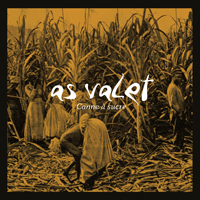
AS VALET
CANNE A SUCRE (A Night on Canopy, CANOPYLP112)
By coincidence here is another Gwo-ka-inspired album that came out in Benelux and France in 2022. (Big thanks to our Man on the Spot, Ken A!) Discogs seems to think it should be classified as hip-hop, noting the categories "Jazzy" as well as "Instrumental," though there are definitely singers on here. The "jazzy" I suppose is the tooting muted trumpet, behind the susurration of shakers, insect sounds and ambient noises. The hip-hop is credit to the producer, "As Valet," who DJs a late-night radio show in UK. This is similar in some ways to the Polobi album on RealWorld, but less obviously derivative of early Miles, so a lot subtler. The opening cut "Dominos" draws you in immediately, and not only because if you go to the Caribbean, you will get drawn into endless games, slamming bones on a formica table and buying a round if you lose. The ambience sets the stage— though, be advised, don't wander off into the bush on your own. Not even for a quick pee: you will get disoriented (as I once discovered in Haiti). The drums are frontal in the mix and lend a very transcendent feeling to the proceedings, while the atmospherics just glance off your cerebellum in the outsides of the speakers instead of dominating. The sequencing is great and it's one to put on repeat and groove in the mellow late-night mood.
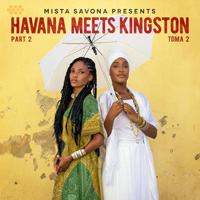
MISTA SAVONA PRESENTS
HAVANA MEETS KINGSTON PART 2 (Cumbancha)
Jake Savona has deep pockets or else some great connections. The second installment of his Havana meets Kingston trip finds him rubbing shoulders (& mikes) with reggae legends Prince Alla, Bopee Bowen and Clinton Fearon, not to mention one of the world's greatest lute soloists, Barbarito Torres. Cuban percussionist Changuito also turns up in Studio Areito 101 at Egrem (a place inhabited by angels, according to local legend). And to be doubly blessed Jamaican tracks were laid down at Tuff Gong. Clinton Fearon singing "The Human Chain" takes us right back to the legendary Gladiators' sound of the 70s and 80s. It's quite a grab-bag: I can do with out Cimafunk, but then I prefer Doris Day's singing to Bob Dylan's, so everyone to their own poison. The recordings are mostly relaxed and familial with these accomplished musicians fitting right into the groove whether it's reggae, rocksteady or son montuno. I guess the idea is for it to be like a pan-Caribbean broadcast, showcasing many styles, but when they merge several genres in a dubby take of "Lágrimas Negras," sung by Beatriz Márquez, I feel like they have lost it. It's a lovely ballad but the one-drop drumming does not improve it though the pianist valiantly keeps veering back to straight montuno. They repeat this experiment with "Juramento." Sorry Savona, you can't force lovely Cuban Son to sound like reggae, it's never going to work. The overproduced track 12, "Reggae y son," featuring a cast of thousands, with rap over a Cuban brass section, also doesn't pass muster, in my ever-so-humble opinion. Havana and Kingston have much in common but forcing a reggae drum backbeat into Cuban music strikes me as pointless, like a pineapple omelet. The four straightforward reggae cuts have the edge over the Cuban and mixed ones. The last track is kicked off by the great Jamaican bongo player Bongo Herman and then Prince Alla takes the vocal over an assured Sly-n-Robbie style rhythm.
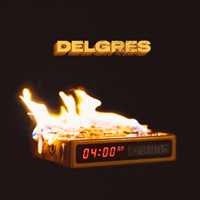
DELGRES
4 ED MATEN (4 00 AM) (Delgres Music)
Delgrès deliver another great mixture of blues rock with some sophisticated production, taking their pan-Caribbean sound from New Orleans to Guadeloupe via Paris and bringing it into a global focus. The leader is singer-songwriter Pascal Danae who plays guitar. The band is named for Louis Delgrès, a Creole officer who led an uprising against Napoleon in the Caribbean in 1802. He blew himself up rather than surrender and ironically he has a memorial facing Toussaint L'Ouverture in the Panthéon in Paris. (The irony is they were both victims of the French state.) Though France is now a post-colonial country the effects of empire are still felt and Danae's songs assess the current situation in terms of immigrants struggling, separation, racism and slavery. When he was 30, Danae returned to his ancestral home of Guadeloupe and saw his ancestors' emancipation proclamation dated 1841. This brought things into clearer focus for him. He took his passion for guitar to London where he became a session musicians working with Peter Gabriel, Youssou, Gilberto Gil and others. The New Orleanian element comes through the rhythm section of Baptiste Brondy on drums and Paris conservatory-trained RafGee on sousaphone, instead of bass. The hard big boom production does recall some of Peter Gabriel's more bombastic rock efforts. See "Assez Assez" which retains a Caribbean lilt.
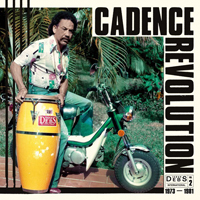
DISQUES DEBS
CADENCE REVOLUTION (Strut)
Spanning the years 1973-1982 -- a golden decade for Caribbean music -- this CD presents the big names like Super Combo, Les Vikings, Guy Conquette and Ti Celeste, along with some lesser-known but compelling exponents of Ka-Dans, or Cadence, from the Disques Debs catalogue. This sound came from the French-speaking islands of Guadeloupe and Martinique and held its own against rival influences coming from Haiti (mini-Jazz), Puerto Rico (salsa), Trinidad (Calypso, Soca) and Jamaica (Reggae). Nevertheless, cadence is a descendent of compas from Haiti, a stylistic neighbor of Dominican merengue and includes dashes of many cultures. Haitian mini-jazz (typified by Nemours Jean-Baptiste) evolved out of economic necessity from big bands when the horns and percussion section were replaced by keyboards, kit drums and electric guitars. The Cadence bands restored the horns and took salsa as their inspiration for the brass section (copying Willie Colón). Henri Debs (whose catalogue is the basis for this reissue) turned to the LP format to give bands he recorded room to breathe and stretch out which was important to keep the dance floor moving. He had a house band of sax, bass, drummer and conguero who could be called on to beef up visiting groups. In addition there was another outside influence in the form of Congolese supergroup Ryco Jazz who came on tour in 1967 and stayed for several years. They created a hybrid band called Guadafrica (new to me) who can be heard here. And many musicians went on tour to Paris, some of them staying there to entertain the expat audience. Most of the groups presented here performed at big day-long festivals with other bands and this led to cross-fertilization of ideas. This is a brilliant brightly lit snapshot of Cadence at its peak. In the 80s new influences, such as funk took root in the Caribbean islands, however Galaxy's 1977 track entitled "Disco funk" is actually an entertaining exercise in speed and aural dynamics. While there are merengues and characteristic examples of "mini jazz," such as Smoke's "Lina femm' foll" and Rico's "Pas coler la," there are also many outstanding and innovative cuts: Koumbit's "Lagé yo" breaks down to clapping and percussion and fades out all too soon; there is even a reggae track: a Wailers' style groove called "Stranger" by Midnight Groovers. One of the highlights is Guy Conquette's "Ping pong," a 45 from 1975. While there is no suggestion of religious ritual (like Santería) being behind any of the music, this starts with wild yelling and a drum workout before electric piano that is positively possessed comes in. All round this is a fine compilation.
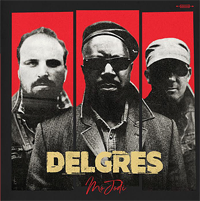
DELGRES
MO JODI (PIAS)
I put this on and was immediately transported to New Orleans by the high energy guitar and drum backbeat, then listened closer. Yes, it's French creole they are singing, but the Caribbean variety from the islands rather than the mainland. Delgres is a power trio of bass, drums and lead guitar, but the bass is actually a sousaphone! I first saw them on YouTube and was captivated. Lead vocals and guitars (including Dobro with slide) are the province of Pascal Danaë, born in Paris to Guadelupean parents. He and drummer Baptiste Brondy shared a love of Mississippi Delta Blues, but wanted that N'Orlins second-line sound on bass and were thrilled to encountered Rafgee (Raphaël Gouthière), another Parisian and conservatory-trained trombone player, who also plays trumpet, trombone and flugelhorn. But whatever he is doing, Rafgee is another lead instrument (like Jack Bruce, rather than just a backing boost to the bass drum bomp). There are also country and rock inflections in their sound. And there is a live urgency to their recording: Danaë is a real veteran having won the French equivalent of a Grammy in 2015 and performed with Youssou N'Dour, Gilberto Gil, Peter Gabriel, Neneh Cherry, Souad Massi and Morcheeba, one of whom shows up on here. Despite the small line-up this is a varied and well-rounded album.
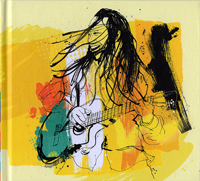
AURELIO MARTINEZ
DARANDI (RealWorld Records)
Nice to hear from the Garifuna again. These people are descended from Africans who were enslaved and shipped to the New World but never made the auction block because their ships sank. Survivors made it to the island of Saint Vincent where they blended into the Carib population, eventually finding their way to the mainland countries of Honduras, Belize, Guatemala and Nicaragua. Their own style of music is paranda, centred around an acoustic guitar, which is quite distinct from neighbors like the Cuban son or Colombian cumbia, but is also part African and part Latin American. You can hear elements of West African guitar as well as inevitably American blues in the playing. Aurelio, the leading exponent, sings of struggle and the quest for Garifuna identity as they are increasingly marginalized in Honduras and other places where they are settled. This is Aurelio's fourth album and he revisits his most popular songs from the three previous discs in polished recordings featuring some ace sidemen.
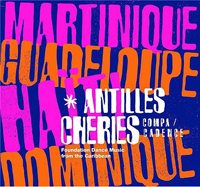
ANTILLES CHERIES (Compa/Cadence)
FOUNDATION DANCE MUSIC FROM THE CARIBBEAN (Fanon Records)
An alternative to the "fearless crate-digger" approach to music is for the compiler to be rooted in a regular broadcast, whether on the radio or in a nightclub, where you get immediate feedback and have to stay on top of the music. Thus this new compilation of "the roots of Caribbean dance music" gets straight to the golden discs without a lot of fluff about the Raiders of the Lost Wax. In fact there's one of those Eureka moments at the start: In 1969 the Congolese trio Ryco Jazz had a lengthy stand in the Antilles and brought that flavor back to African music (later evidenced in such great acts as Sam Mangwana & African All-Stars). They had a hit with a track called "Si I bon I di bon" credited to singer Freddy N'Kounkou. This new disc opens with a tune called "Si bon di bon" by Simon Jurad which is the original. This fine compilation of dance music was put together by Emile Omar from his archives of music from Haiti, Martinique, Guadeloupe and la Republica Dominicana. Omar is a DJ at the renowned Radio Nova in Paris who have issued some outstanding tropical comps over the years. They have instituted a label called Fanon Records (after Frantz Fanon, the famous Martiniquan Marxist author of works on the effects of colonialism and a pioneer of "Black consciousness"). Now, there is some very wanky synthesizer that characterizes this right off as late 70s dance-floor fodder, but if you can get past that (it is indeed quaint now), there's an irresistible groove, as on Experience 7's "Banzai." 1979 was in fact the turning point in the music as the little huts where these bands played biguine were wiped off the earth by the 175mph Hurricane David; when the music gradually came back it had evolved into zouk. Despite this being primarily dance music, inevitably if you cannot follow the creole you will miss the humor in the lyrics which have sexual double entendres (the coconut refers to a favorite part of female anatomy) and veiled political commentary. There is an outstanding 15 minute cut from Rodrigue Millien, who also features on the new Tanbou Toujou Lou comp reviewed above. The late great Coupé Cloué appears with his classic "Plein caille" which he recorded as Henry Gesner and Trio Select at the start of his career. This is a fine entry in the "Peanut vendor" playlist, though my pal Ken Abrams says it's a cover of "Sawale" by Rex Lawson. These chéries deliver the Antillean groove in fine style.
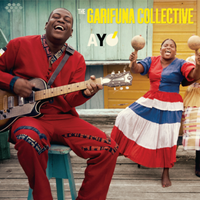
THE GARIFUNA COLLECTIVE
AYO (Cumbancha CD-27)
Six years ago the Garifuna Collective broke onto the world stage with the great album Wátina and started an international tour to promote it. Unfortunately their front man Andy Palacio died suddenly at the age of 47 and it seemed like a fatal blow. However the band, drawn from the cream of traditional musicians from among the Garifuna people of Central America, is still strong, and soldiered on. I feel they are missing the central focus that the charismatic Palacio brought to them, but the sequel is solid and grows on you. This is a set of traditional rhythms played on hand drums with vocals, electric bass and acoustic and electric guitar. Belize is also known for Paranda music, so there is a lot of diversity in their culture and that is also evident on this recording. Without Palacio there are several different vocalists adding their individual interpretations to the material. The disc settles into a mellow groove, clearly the Garifuna Collective are very used to one another's company -- they anticipate little breaks in the guitar or drum in subtle ways that are a delight. Producer Ivan Duran has captured them sounding relaxed and spontaneous. The title, "Ayó," translates as "goodbye" so it's a tribute to Palacio, but there's also a bright future for the collective.

AURELIO
LARU BEYA (Sub Pop NXA002)
2011 kicked off with this fine disc from Aurelio, a Garifuna singer-songwriter. The album is dedicated to Andy Palacio who was about to conquer the world when he suddenly died in 2009. Honduran music was not widely known until the Paranda album on Detour in 1998 broke it wide open for us. Aurelio Martinez was the youngest performer on there and the charismatic Palacio was most likely to bring it to the world stage. The present grouping was formed out of the tour that Palacio had assembled to achieve this. But Aurelio has not been in the shadow of Palacio, he is a very gifted guitarist and percussionist from a musical family that imbued him with the Garifuna musical traditions from his infancy. In addition we get guest vocals from the unmistakable Youssou N'Dour and a couple of other very talented West Africans: Balla Sidibé and Rudi Gomis of legendary Orchestra Baobab. N'Dour took Aurelio under his wing, and brought him to Dakar as well as having him open for him on tour. So Aurelio got to explore the African roots of his music first hand, and in addition get Etoile de Dakar to back him on one track on this album. The title cut has a wonderfully sinuous backbeat: I defy you not to move and groove to this. The album was recorded in a matter of weeks in a makeshift studio on the beach in Honduras. Ivan Duran the producer wanted to capture the old sound of the place where bands in the 60s played mambos, calypsos and ska -- everything but Garifuna music, in fact. But then the producer spent two years finessing the sound in post-production with overdubs. This does not detract from the spontaneity and beauty of the songs themselves. Aurelio is a natural and this is a wonderful album.
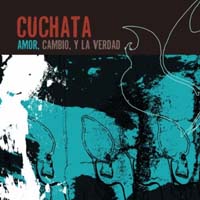
CUCHATA
AMOR, CAMBIO Y LA VERDAD (self-published)
Marcelo Quinonez is the force behind this venture. A trip to his ancestral home of Nicaragua inspired him to explore the traditions of South American music: Peru, Columbia and Argentina, but filtered through a post-modern sensibility so that Cumbia rubs up against hip-hop and ska. "La Verdad" is the stand-out track, but there is a consistent brilliance to much of it. I sense the impact of Sting & The Police was huge on Latin America. That pop-reggae sound is different from say Toots & the Maytals' speedy style, but is lighter than the Wailers. "What am I doing?" adds swelling Memphis horns to the opening reggae groove, then at mid-point kicks it up to double-time for a ska rave with trombone. It's a short album, half an hour long, with two bonus tracks that are a second take of "Asuncion," and an unplugged version of "What am I doing?"
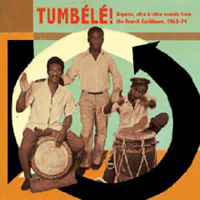
TUMBELE
Biguine, Afro & Latin sounds from the French Caribbean 1963-74 (Soundways CD017P)
I can't imagine this will sell well, or even enough to recoup manufacturing costs, which is a pity. It reminds me of a series I collected in the vinyl era: Original Music, published from "Big Pink" in Upstate New York. Remember those great albums, like Street music of Panama? This will go the same way as that. In twenty years people will be hunting high and low to find it. It's a really good survey of Hugo Mendez' record collection. (My conjecture, since he compiled it.) Les Kings deliver "Oriza," which as it turns out was a hit for a Puerto Rican group called La Conspiracion: I only knew it from the cover by Latin Brothers which is one of my favourite tracks by them, but now that I listen again it is clearly a bomba. (There's a video of the original on Youtube.) It's four minutes of steam, but I bet in concert it went for half an hour. The only "well-known" acts on here are Les Loups Noir from Haiti and Ry-Co Jazz. Ry-Co are prefaced by Ensemble Perfecta to show where they got their groove. Tumbélé is the name of the hybrid rhythm that was forged after Ry-Co hit the Antilles in 1967 and brought soukous guitar to the local sound. Manu Dibango of Ry-Co reprises "Dima bola," a tune he first performed with Le Grand Kalle. There's also a strong folkloric current that ties this music to older traditions and becomes increasingly important as globalization erases these strains from regional consciousness. Anzala, Dolor, Velo give us "Ti fi la ou té madam" which is pure gwo'ka, though it has departed from Guadeloupean tradition in the addition of a bright soprano sax. The percussion and call and response vocals are true to form in this great rootsy track.
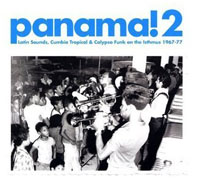
PANAMA! 2
LATIN SOUNDS, CUMBIA TROPICAL & CALYPSO FUNK FROM THE ISTHMUS 1967-77 (Soundway SNDWCD013)
I missed Panama! 1, but here is a hot and happening set of varied music, as the subtitle explains. My Panama section consists on one LP: Street Music of Panama, recorded by Michel Blaise in the 60s and reissued by John Storm Roberts' Original Music, plus albums by expatriates Ruben Blades and the brilliant pianist Danilo Perez, and a track by El General, a pioneer of Reggae en Español. At first listen popular Panamanian music is not that different from Vallento, Cumbia and other Colombian music. In fact it fires up a doobie the shape of the isthmus and is smouldering by "Flora," the third track, a wild guaguanco by Maximo Rodriguez y sus Estrellas Panameñas. This disc is well sequenced. If you tend to space out in samey sets, there is a great version of "Aint no sunshine" to wake you up right in the middle. It goes from accordeon-driven dance numbers to traditional rootsy drumming and familiar Latin grooves. There must have been a problem with the smoking "La Confianza" by Menique el Panameño, because it ends abruptly with a sound like a cassette deck eating a tape. "La Escoba" by Alfredo y su Salsa Montañera has a fierce guitar doubling the accordeon. Things wind down nicely with a calypso, "Love letters," sung in English by Lord Cobra. All in all a fine compilation.
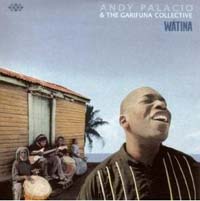
ANDY PALACIO & THE GARIFUNA COLLECTIVE
WATINA (Cumbancha CMB-CD-3)
There may be nothing to it, but when I first listened to Andy Palacio's new disc I heard an echo of the Tulsa sound made famous by J.J. Cale. Of course Cale was popularised by Eric Clapton and Mark Knopfler covers of his songs, but there's something to that clipped Ovation sound that carries over to Andy Palacio's new album. Palacio brought the Punta rock of Belize to the international stage a few years ago, but it owed as much to the techno synth-drenched rock posturing of zouk as to anything authentically homegrown, and he has now gone back to his roots. Garifuna Collective is a group of musicians exploring the traditional music of Belize that was on the verge of extinction. It's laid back and there's an echo of the burru drumming of Jamaica in the beat. The sound on this recording has a modernity to it, and a very accomplished production, so that makes it exactly the kind of thing that gets a lot of play on my system. It's also very different from other Caribbean music. The Garifuna are descendants of African slaves who were shipwrecked off St Vincent in 1635 and and blended into the indigenous Carib community, resisting European colonization (which led to their being exiled to the coast of Central America). Paul Nabor, legendary 75-year-old singer who joined Palacio on the great PARANDA album in 1989, returns for "Ayo da," a song which he wrote 60 years. The melodic simplicity is infused with musical virtuosity and a fine production by Ivan Duran.
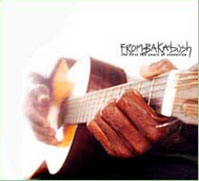
FROMBAKABUSH (The first ten years of Stonetree) (STR027)
This is a welcome compilation of Stonetree Records. I haven't heard any music from Belize in a while and it's great to plug into the organic sounds of Punta and Parranda once again. The big star of the label, Andy Palacio, is here, and so are a host of other talented musicians. "Baba (father)" is a Garifuna song that almost sounds like a spiritual done by newcomer Adrian Martinez backed by the Garifuna All Stars. Palacio is up next. He has the slick pan-Caribbean sound, but then we reprise "Naguya nei," the big hit of Paul Nabor (from the classic PARRANDA album on Detour records which you MUST have [see below]). It reminds us how great this music can feel. More African and Latin acoustic roots merge in Aurelio Martinez' contribution, "Nuwerun," an up-tempo bit of Garifuna Soul. "Lirun dan (Sad times)" by Lugua Centeno is next and this is perfect: a moody bit of singing and drumming from Honduras that is actually an old bolero, but could be burru drumming from Jamaica. It's only three minutes long, but halfway through there's a pause and a dubby return with some boffo organ chords floating past which sends me. I'd go for at least an hour of this one. The Garifuna even made it to Guatemala and we hear next from Sofia Livingstone, one of the women of this musical style who never considered a singing career but turns in a soulful song on the sad topic of miscarriage. After a couple of jaunty sea-shanty like numbers we get to "Que sera sera" by Leroy Young the Grandmaster, which is a really irritating spoken piece, and then after a long silence a "hidden" bonus track which also doesn't do much other than suggest an MC trying to be spontaeous and lively while a marimba band riffs in the background and someone fiddles with a radio. Better left unsaid. This is a good label and there are good bits on the CD but is a bit too scattered to recommend whole-heartedly.
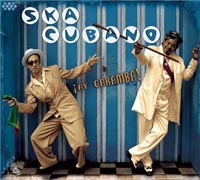
SKA CUBANO
!AY CARAMBA! (Cumbancha CMB CD1)
What's in a name? Clearly the parents of the world's most famous baby never heard of Dr Spooner, the English don who always switched initials inadvertently. When he sent his daughter to post a letter she pissed the most. So Brad Pitt and Angeline Jolie called their offspring Shiloh. Are they nuts? His school chums will call him Piloh Shitt, it's inevitable. Which brings me to Ska Cubano. I had heard of the band, I think they had a track on the last BBC World Music awards CD, but I only just heard their second CD, but it's not particularly ska, and not really Cubano. I think Cumbia Jazz is a more accurate description. There's a couple of louche latin lotharios on the cover looking like tryouts for a Cab Calloway costume contest: Natty Bo & Beny Billy. Mister Bo, a retro ska singer & DJ from London, was on a trip to Cuba when he met Señor Villy, a Beny More impersonator, singing in a bar. Their voices meld together well and they have a band of hotshots capable of throwing down ska sax, Cuban tres, Cumbian piano, whatever it takes. The result is greatness. They take a different tack from New York Ska Jazz Ensemble, heading more towards a pre-bebop 1940s jazz sound which they achieve with smoothness and suavity. My favourite tracks, though, are the cumbias which they invest with vigour and great humour (not to mention shrieking trumpet and dancing clarinet), and the novelty numbers ("Big Bamboo" & "Istanbul" a Tin Pan Alley/music hall song from the 1920s). Among the ska tracks, a wild treatment of Beny More's "Marianao" stands out for romping excitement. "Chispa Tren," an original composition by Bo, tilts towards Raymond Scott & is an aural delight with its knackered mechanism and cartoonish joie de vivre. Frankie Laine's 1951 hit "Jezebel" gets Prince Busterdized. Despite the "Tom Jones does Las Vegas" grandiosity of the melody, the band chugs on relentlessly even when Natty seems to be a semi-tone off. (But, then this is two-tone music, right?) Haitian santeria is up next. Is nothing sacred?! The ritualistic merengue "Bobine" comes across with dead certainty & a deep understanding of the traditions of Caribbean praise-singing. To end there's the icing on the cake: "Cumbia en Do menor," a hit for Lito Barrientos that I discovered through the great MEN WITH GUNS soundtrack. Sophisticated pan-Caribbean cut-ups with lots of jazz and love.
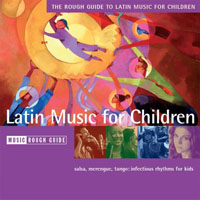
ROUGH GUIDE TO LATIN MUSIC FOR CHILDREN (RGNET CD1167)
I gave this to my granddaughter: it's a really well-sequenced tour of Latin music. It zips around the Atlantic, getting as far as the UK, but mainly sticking to Central America where the heavy hitters hail from. The album starts feebly with a cover of Celia Cruz's "Bemba Colora." Why on earth would you listen to someone else doing this? Maybe they know kids will not remember Celia, la Reina, but her version was definitive. But then we are steered onto the dance floor in the able hands of the Latin Brothers de Colombia, perhaps my favourite Latin dance band. Just to remind us that we are children open to exploration and not erecting boundaries, we have a Brazilian song next which is only Latin by association: Anastacia Azevedo's excellent "Amaniara." Another favourite & the title cut of her great album on Piranha, I'd call it a cross between forro, MPB and reggae. Africando give us "Colombia, mi corazon" then we get back to Colombia proper for Joe Arroyo y La Verdad doing "La Noche." There's one irritating thing about this compilation: both the Joe Arroyo cut and the Latin Brothers cut are supposedly drawn from albums titled BEST OF. I would rather they told you which album they were on to begin with. I have another BEST OF LATIN BROTHERS compilation which doesn't include "Sobre las olas." I have the Joe Arroyo on 30 PEGADITAS DE ORO, which probably has more cuts than BEST OF. Chango Spasiuk does a tentative tango in his inimitable way before we get swept out to sea and end up in the UK with a group called Merengada doing a speedy merengue, keeping those Brits boogie-ing till they barf their boddingtons and dimly recall their sunburnt rum-soaked holiday in the Dominican Republic. It's nice to hear octogenarian Cuban drummer Pancho Quinto, represented from his ground-breaking RUMBA SIN FRONTERAS album of 2003. Congrats to the savant kiddies who found this overlooked gem as a pick to click. After that it's hit after hit from Herencia, Soledad Bravo and Plena Libre and on and on. Sierra Maestra's "Rumbero soy" is presented in a disco remix which is a novelty. Though I rail on about how sick I am of compilations, a good sequence makes it easy to listen to a varied playlist instead of trusting to the vagaries of the radio. If you want a good hour of Latin music, no need to be childish, spin this Rough Guide for kiddies.
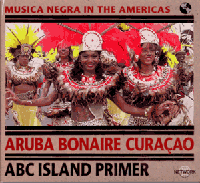
VARIOUS ARTISTS
ABC ISLAND PRIMER (Network)
I'm happy to report the Network label is continuing their excellent MUSICA NEGRA IN THE AMERICAS Series. In 2000 they issued a double CD sampler of Black Music of the Americas that featured representative tracks from each country. Some of the choices were too obvious, like the Abyssinians "Satta" and the Congos' "Fisherman" to represent Jamaica, but there were real gems in there too, such as an obscure cut from Monguito, Pepe Vasquez' "Ritmo de Negros" from Peru, and Carmen Gonzalez "Caramaba" from Ecuador. The success of the double CD was followed by solo albums from Vasquez and Gonzalez that were invaluable in widening our knowledge of the black music traditions of those countries, as well as featuring the best artists in the genre. Now there's a new sampler called ABC ISLAND PRIMER" -- a delightful set introducing black music from Aruba, Bonaire and Curaçao -- three pretty obscure spots on the musical map of the Caribbean (50 miles off the Venezuelan coast). There are hints of bachata and son, but a freshness that is really inspiring. The changing heritage of the islands (called the "Useless Islands" by the Spanish conquerors who were in turn routed by the Dutch in 1634; the Dutch used the islands as a base for trading slaves after they took over the Portuguese slave trade on the West Coast of Africa) is reflected in multiple musical influences. My current favorite track on the album is "Ta mi bida (It's my life)" by La Banda Rompe Cabeza. The song is a tumba; the instrumentation is kwarta (i.e. the Spanish cuatro guitar), mandolin, bass, and metal scraper. The mandolin skitters about in a style reminiscent of soukous guitar that is super! Chin Behilia is Curaçao's best-loved and most popular singer. It's easy to see why. His son montuno "Bendishon disfrasá (Blessing in disguise)" is sublime: his voice almost whispers while a guitar rocks back and forth and a subdued flute goes quietly bonkers in the background. The hits keep coming as this is followed by another Cuban-sounding track: Malfada Minguel's "T'asina ta bida (That's life)" that would work well in her friend Celia Cruz's repertoire.
Just when you think that the best the ABC islands have to offer is imitation salsa, we get a parranda track from Aruba that is heavy on accordion and percussion. This Afro-Venezuelan Christmas song sets the stage for a very African sounding track, Issoco's "Biba felis (A Joyful life)," which is described as muzik di zumbi. It's in fact traditional Curaçaon music, which the band has arranged for the African instruments balafon, shekere and djembe. Now the ethnomusicologists can get really fraught over which came first. At the other extreme is the noodly jazz version of muzik di zumbi performed by the immensely popular Izaline Calister. It makes a fascinating contrast. Accordionist Vicente Kelly who is a star in Colombia and Venezuela serves up more tumba. Not surprisingly his sound is reminiscent of vallenato. His "Polin tin shete buraco (Polin has seven holes)" is tight and feisty, conjuring up a smoky bar full of churning inebriated dancers. An Antillean waltz that is heavy on syncopated rhythm and elegantly makes a bridge to a really raw fiddle cut by Tipico Strea di Yara from Aruba follows this.
Occasionally an album pitched at the mainstream comes across with the goods and appeals even to the jaded musicophile or those of us with more esoteric taste. I'm thinking of the ROUGH GUIDE TO CUMBIA or the PUTUMAYO PRESENTS REPUBLICA DOMINICA compilations, both of which managed to cover a broad selection of music without being too obscure. ABC ISLAND PRIMER will appeal to anyone who likes musical adventures.
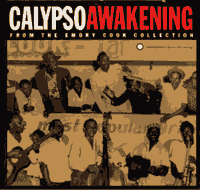
VARIOUS ARTISTS
CALYPSO AWAKENING (Smithsonian Folkways)
My pal Deejay I.J. keeps abreast of the carnival scene in his native Trinidad. He does this bravely even when the annual songs inevitably degenerate into panegyrics to steatopygous glutes. (Just as I follow my homeboys Newcastle United FC even when they take a licking from mediocrities like Everton or West Ham.) Anyway, IJ put together a compilation of contemporary calypsos for Rituals Music last year called CARIBBEAN JAM featuring a lot of rapso and other hybrid styles. It's put together lovingly and wisely and should endure. But for me the older calypsos have always been more interesting. Now Smithsonian Folkways is getting on the case with its reissues from the Emory Cook collection. LORD INVADER and CALYPSO AWAKENING are the first two titles from Trinidad. Folkways is planning to reissue all 140 titles that Cook recorded in his musical travels around the Caribbean.
Cook was no ordinary sound engineer. He was passionate about the music and developed his own portable hi-fi recording equipment for optimum sound in the field. These recordings are crisp and bright, far in advance of anything else being done contemporaneously.
There's a lot of variety in the tracks here. Lord Melody's "Booboo Man" makes fun of his own ugly looks. In fact he is so ugly even his own children are afraid when they see him. Mighty Sparrow's "No, Doctor, No," is catchy and politically engaged: something that calypso excels at. Double-entendre is present in "Taxi driver," a song that compares a woman to a car. The accompaniment by Small Island Pride is brisk and Mento-like. "Yankees Gone," the tune that won Sparrow his first crown as Calypso Monarch, is played by a steel pan ensemble. The crowd has already memorized the lyrics and sings along. This is followed by Sparrow's own version (recorded the night he won), celebrating the departure of American GIs from the island. With the wealthy American playboys gone, normal life can resume: the glamour boys will take over Port of Spain and make the women sweat.
For me the highlight is the Picong Duel or cutting contest between Sparrow and Lord Melody. They take turns improvising insulting rhymed couplets. The crowd reaction, when they flub or strike home, is part of the fun too. If I say this is an important recording you may think that means you'll put it on the shelf and not listen to it, but it is very much alive and demands close and repeated listening.
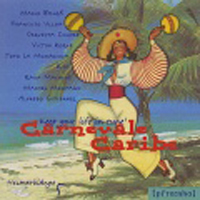
VARIOUS ARTISTS
CARNEVALE CARIBE (Piranha CD 34-2 1994)
A superb introduction to Caribbean music, filtered through the ears of the annual Heimatklänge festival in Berlin. The fifteen cuts on this CD were recorded during the festival when Reggae, Soca, Salsa, Merengue, and Cumbia bands were giving their best shot for the European audience. The late Mario Bauza kicks things off with some Mambo mayhem in "Wild Jungle," but we are quickly breaking categories when Cumbia king Francisco Ulloa teams up with Vallenata star Alfredo Guiterrez on the second track, "Somos Latinos," that preaches a universal Latin sodality. Geographic borders also collapse as Totó la Momposina from Colombia invokes ancient Andean gods; Rico, the ska trombonist, revamps his 1980s British hit "What you talkin bout?"; and the Haitian Rara Machine calls forth the voodoo pantheon of West African Orishas. This sweat-drenched collection will wear out muscles the other dance compilations don't reach.
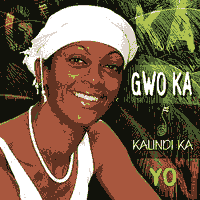
MARIE-LINE DAHOMEY
YO (Playa Sound)
Marie-Line Dahomey is a leading exponent of Gwo Ka music from Guadeloupe. The French deliberately mixed slaves from different parts of Africa to prevent them communicating, but the crafty slaves learned to communicate through music. Today the songs are sung in creole, rather than African languages, and the drums are made from tree trunks. (Slaves were not allowed to cut down trees so used barrels.) Kalindi Ki is the name of her troupe and their album is titled YO. The group is comprised of females who drum and dance. There's a jazz trumpet on "Wozeline O," but otherwise it's hand-drum (ka) accompaniment with tambourine and small percussion. A very satisfactory album, just the thing to clear the techno drone from your brain...
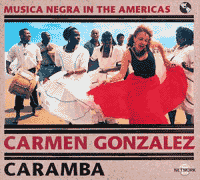
CARMEN GONZALEZ
CARAMBA (Network)
Another release of Musica Negra on the Network label comes from Ecuador. It's Carmen Gonzalez's CARAMBA. This time there's a more direct connection to the Caribbean and that is three tracks recorded with Havana Casino Orchestra and the salsa tracks performed by her own band in Quito. The album opens with quite stark songs backed by congas and marimbas, but rapidly opens into the full lushness of the Cuban big band sound. The ensemble called Legion del Sabor that backs Gonzalez on most of the tracks shows the pervasiveness of salsa is only distinguished from the Cuban tracks by the addition of marimba. This is a really hot album and one fans of salsa looking for something new will snap up.
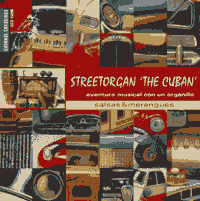
JAAP DE KWAASTENIET
STREETORGAN 'THE CUBAN' (Channel Crossings CCS 15098)
Jaap de Kwaasteniet is alive and kicking in Holland. He spent a lot of time studying conga drumming in Cuba and the Dominican Republic. In 1991 he acquired a 36-key barrel organ -- the kind of instrument once played in the street by organ-grinders, but now pretty much a museum piece. Just like a player piano, the mechanism is activated by cranking a pre-punched roll, and, with a little practice, De Kwaasteniet has become an accomplished composer on this neglected instrument, as evidenced by his collection of salsa and merengue, STREETORGAN 'THE CUBAN' (Aventura musical con un organillo). There's a rocking repertoire of different styles of Caribbean music with percussion accompaniment and some of Jaap's buddies on trumpet, sousaphone, double bass and a "Stradivarius-model" musical saw! Their version of Perez Prado's kitschy "Mambo #5" is perfect. With timbales and maracas and the goofy vocals it's a very full sound. So far my favourite cut is the Cumbia, and I have balked at the version of "Whiter Shade of Pale," which definitely sounds more Procul Harem than Bach, but it's an interesting take to say the least. However there are plenty of options: Boleros, Danzons, Plenas, Sambas, and a heap of charm.
